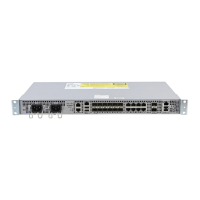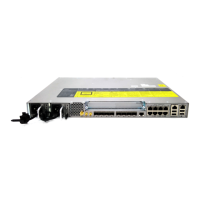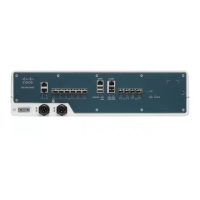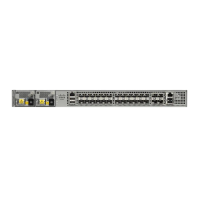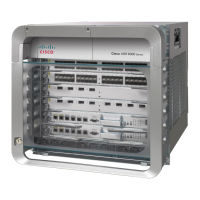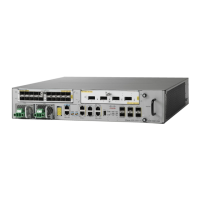PurposeCommand or Action
Creates a service instance (an instance of an EVC) on an
interface and enters service instance configuration mode.
service instance id ethernet
Example:
Device(config-if)# service instance 100
ethernet
Step 4
Defines the matching criteria to be used in order to map ingress
dot1q frames on an interface to the appropriate service
instance.
encapsulation dot1q vlan-id
Example:
Device(config-if-srv)# encapsulation dot1q
100
Step 5
Binds the service instance to a bridge- domain instance where
bridge-id is the identifier for the bridge- domain instance.
bridge-domain bridge-id
Example:
Device(config-if-srv)# bridge-domain 200
Step 6
Sets the aging time for secure addresses, in minutes. The
optional inactivity keyword specifies that the aging out of
mac security aging time aging-time [ inactivity
]
Step 7
addresses is based on inactivity of the sending hosts (as
opposed to absolute aging).
Example:
Device(config-if-srv)# mac security aging
time 200 inactivity
Enables MAC security on the service instance.mac security
Example:
Device(config-if-srv)# mac security
Step 8
Returns to user EXEC mode.end
Example:
Device(config-if-srv)# end
Step 9
Configuring a Sticky MAC Address
If sticky MAC addressing is configured on a secured service instance, MAC addresses that are learned
dynamically on the service instance are retained during a link-down condition. Perform this task to configure
sticky MAC addresses on a service instance.
Carrier Ethernet Configuration Guide (Cisco ASR 920 Series)
104
Configuring MAC Address Limiting on Service Instances Bridge Domains and EVC Port Channels
Configuring a Sticky MAC Address
